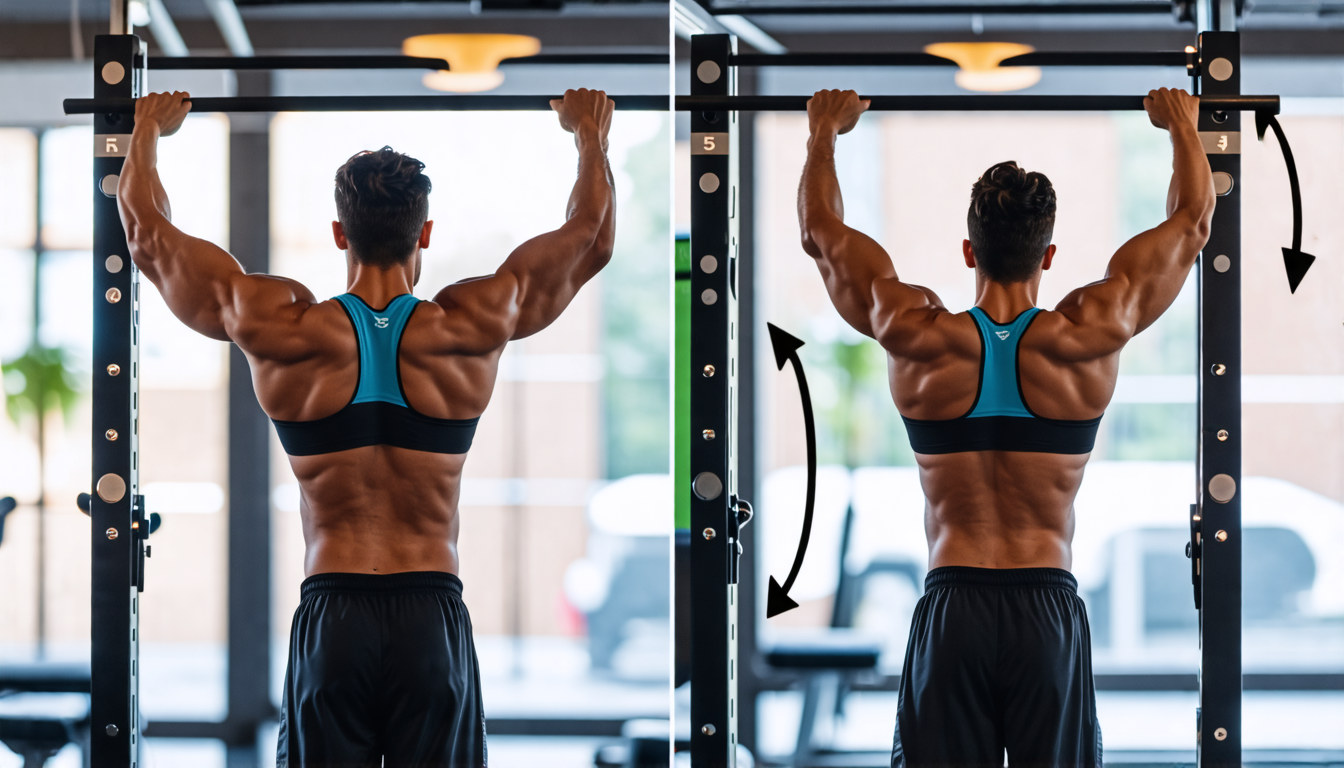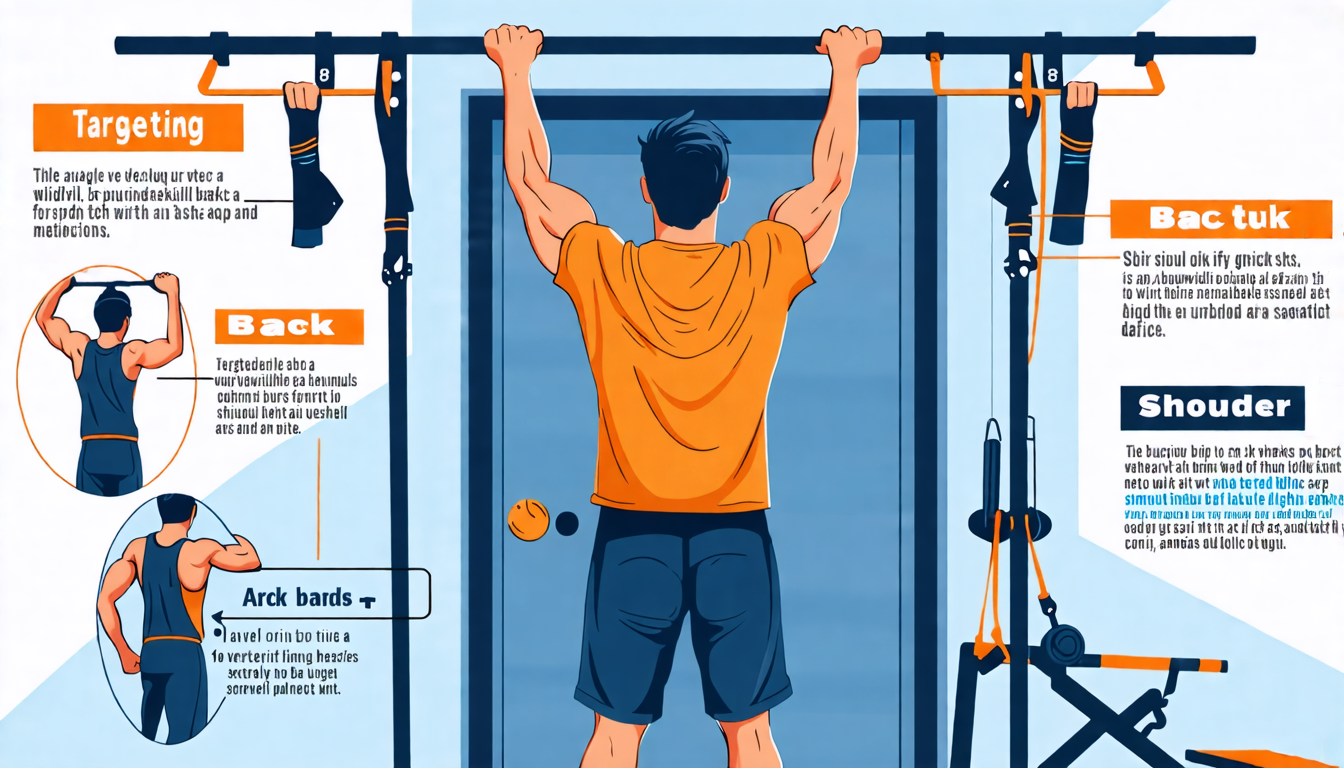Improving your pull-ups can be a game-changer for your fitness regime, and utilizing a fitness bar can make all the difference. Whether you’re setting up a dedicated home gym or simply seeking to enhance your upper body strength, a fitness bar is an essential tool that offers numerous benefits. It provides not only an enhanced grip and increased versatility, enabling a variety of grip positions and exercises, but also supports muscle engagement and overall body conditioning. Pull-up exercises are paramount to building back muscles, enhancing grip strength, and improving general physical endurance, making them a cornerstone in any effective training routine. By following a comprehensive guide on fitness bar usage, you can master the mechanics of pull-ups, execute correct body positioning, and apply progressive training techniques such as assisted and negative pull-ups. Moreover, learning the right form and avoiding common mistakes will ensure safe and effective workouts, ultimately boosting your confidence and performance in home fitness.
Benefits of Using a Fitness Bar for Pull-Ups
Importance of Pull-Up Exercises
Incorporating pull-ups into your fitness regimen is crucial for building upper body strength. This compound exercise engages multiple muscle groups including your back, shoulders, arms, and core. Regular pull-up training can result in improved posture, enhanced grip strength, and a well-rounded physique. They are also an effective way to target the latissimus dorsi muscles, which are essential for achieving a broader back and increased upper body durability. For those using home fitness equipment, a fitness bar is an invaluable tool for performing pull-ups, offering a range of benefits that can elevate your workout experience.
Overview of Fitness Bar Advantages
Fitness bars designed for pull-ups bring a multitude of advantages to your workout routine. They are not just another piece of equipment; they provide unique features that significantly improve your exercises and overall fitness journey.
- Enhanced Grip: One of the standout advantages of using a fitness bar is its ability to offer an enhanced grip. Textured surfaces or rubber coatings can reduce slippage, enabling you to maintain a firm hold during pull-ups. This becomes increasingly important as you build up your strength and start handling more repetitions.
- Versatility: Fitness bars often come with various grip options, such as wide-grip, close-grip, and neutral-grip positions. This versatility allows you to target different muscle groups, adding variety to your pull-up routine. Diversifying your grip can prevent muscle imbalances and ensure comprehensive upper body development.
- Convenience: For home fitness enthusiasts, a portable and easily installable fitness bar makes it simple to integrate pull-ups into your daily routine. Many models are designed to fit doorways or can be mounted on walls, bringing functional fitness to the comfort of your home.
- Progressive Training Tools: Many fitness bars are compatible with accessories like resistance bands and gymnastic rings, which can be particularly useful for beginners. These tools can assist with exercises like assisted pull-ups and other progressive training techniques, making it easier to scale your workouts as your strength increases.
- Durability: High-quality fitness bars are built to last, ensuring that they can support your weight and withstand rigorous training. Investing in a durable fitness bar means you won’t have to worry about the equipment failing mid-routine, allowing you to focus solely on your performance.
The abundance of advantages provided by fitness bars makes them an essential addition to any home fitness setup. Their capabilities extend beyond just providing a platform for pull-ups; they dramatically enhance the quality of your workouts, making them more effective, efficient, and enjoyable.
By integrating a fitness bar into your home gym, you not only gain the ability to perform one of the most effective upper body exercises but also benefit from the enhanced grip, versatility, and convenience they offer. Whether you’re a beginner aiming to do your first pull-up or an experienced athlete looking to refine your technique, a fitness bar is a remarkable investment that can substantially improve your pull-up performance and overall fitness journey.

Step-by-Step Guide to Improving Pull-Ups with a Fitness Bar
Mastering pull-ups with a fitness bar is a highly effective way to build upper body strength, improve endurance, and enhance overall fitness levels. Whether you have a pull-up bar installed in your home gym or use a portable fitness bar, the steps outlined below will guide you through improving your pull-ups efficiently and safely.
Warm-Up and Stretching Techniques
Before starting any rigorous exercise, including pull-ups, it’s essential to properly warm up and stretch to prevent injuries and prepare your muscles for the workout ahead. Here are some recommended warm-up and stretching techniques:
- Jumping Jacks: Do 2-3 minutes of jumping jacks to get your blood flowing and increase your heart rate.
- Arm Circles: Perform arm circles for about 1-2 minutes to loosen the shoulder joints. Start with small circles and gradually make them larger.
- Dynamic Stretching: Incorporate movements like shoulder rolls, reaching for your toes, and torso twists to activate different muscle groups.
- Light Resistance Band Exercises: Use resistance bands to wake up the muscles in your shoulders, back, and arms with light resistance exercises.
Proper Grip and Body Positioning
The correct grip and body positioning are crucial in performing effective pull-ups. Here’s how you can achieve optimal grip and positioning:
- Grip: Use an overhand grip (palms facing away) to engage the back muscles more effectively. Your hands should be slightly wider than shoulder-width apart.
- Thumb Placement: Wrap your thumbs around the bar to ensure a secure grip, which helps in maintaining stability during the exercise.
- Body Position: Your body should remain in a straight line from head to toe. Engage your core muscles, pull your shoulders back, and keep your legs together. Avoid swinging or kipping movements to ensure that your muscles are doing the work.
- Head Position: Your head should be in a neutral position with your eyes looking forward or slightly upward. Avoid looking down as it can affect your neck alignment and overall pull-up form.
Progressive Training Tips
Improving your pull-ups requires consistent practice and gradual progression. Here are some training tips to help you build up your strength and endurance:
- Assisted Pull-Ups: Use resistance bands or an assisted pull-up machine to help support part of your body weight. This assists beginners in building strength without the full load of a regular pull-up.
- Negative Pull-Ups: Focus on the lowering phase of the pull-up. Jump or step up to the pull-up bar and slowly lower yourself down to the starting position. This eccentric motion helps build muscle strength.
- Isometric Holds: Hold your chin above the bar for as long as you can. This can significantly strengthen your muscles and help you achieve full pull-ups faster.
- Increase Reps and Sets: Gradually increase the number of repetitions and sets you perform. Begin with a manageable number and add one more rep each week to continually challenge your muscles.
- Varied Grips: Vary your grip (wide grip, close grip, underhand grip) to target different muscle groups and make your pull-up routine more comprehensive.
Common Mistakes to Avoid and Proper Form
It is essential to maintain proper form to prevent injuries and ensure that you are effectively working the targeted muscle groups. Here are some common mistakes to avoid:
- Using Momentum: Avoid using momentum to complete the pull-up. Swinging or kipping reduces the effectiveness and can increase the risk of injury. Focus on smooth, controlled movements.
- Inadequate Warm-Up: Not warming up properly can lead to muscle strains and reduced performance. Always take the time to adequately warm up before starting your pull-up exercises.
- Incomplete Range of Motion: Ensure you perform full range of motion pull-ups, from a dead hang position (arms fully extended) to getting your chin above the bar.
- Poor Grip: A weak, unstable grip can affect your performance and lead to hand or wrist injuries. Pay attention to your grip strength and thumb positioning.
- Ignoring Core Engagement: Engage your core muscles throughout the pull-up to maintain a straight body line. Flailing legs or arching the back can detract from the exercise’s effectiveness.
By following these step-by-step guidelines, you can use a home fitness bar to improve your pull-ups progressively and effectively. Remember, consistency and proper form are key to achieving your pull-up goals and reaping the maximum benefits from this upper body exercise. With dedication and the right techniques, you’ll see significant improvements in your pull-up strength and performance.
In conclusion, utilizing a fitness bar can significantly enhance your pull-up routine, leading to better strength and overall fitness. Pull-ups are an essential exercise for building upper body strength, focusing on your back, shoulders, and arms. The fitness bar offers several advantages, including improved grip and versatility, which contribute to more effective workouts. Following a structured approach of warming up, ensuring proper grip and body positioning, and progressively challenging yourself through assisted and negative pull-ups can help you steadily improve your pull-up performance. Being mindful of common mistakes and maintaining proper form is also crucial to avoid injury and achieve optimal results. For those engaged in home fitness, a pull-up bar is an invaluable tool that provides a convenient and efficient way to make significant gains in strength training. By incorporating these strategies and maintaining consistency, you will find marked improvements in your pull-ups and overall fitness levels.

